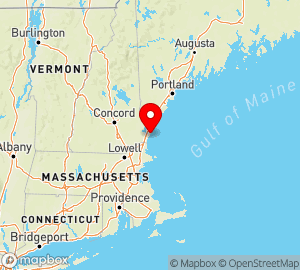New Hampshire
New Hampshire State Information

www.nh.gov
Area (sq mi):: 9349.94 (land 8968.10; water 381.84) Population per square mile: 146.10
Population 2005: 1,309,940 State rank: 0 Population change: 2000-20005 6.00%; 1990-2000 11.40% Population 2000: 1,235,786 (White 95.10%; Black or African American 0.70%; Hispanic or Latino 1.70%; Asian 1.30%; Other 1.90%). Foreign born: 4.40%. Median age: 37.10
Income 2000: per capita $23,844; median household $49,467; Population below poverty level: 6.50% Personal per capita income (2000-2003): $33,396-$35,140
Unemployment (2004): 3.90% Unemployment change (from 2000): 1.20% Median travel time to work: 25.30 minutes Working outside county of residence: 33.30%
List of New Hampshire counties:
New Hampshire Parks
- US National Parks
- State Parks
- Parks and Conservation-Related Organizations - US
- National Wildlife Refuges
- National Scenic Byways
- National Forests
New Hampshire
Ninth state; adopted the U.S. Constitution on June 21, 1788
State capital: Concord
Nicknames: The Granite State; The Mother of Rivers;
Switzerland of America; White Mountain State State motto: Live Free or Die State amphibian: Spotted newt (Notophthalmus viridescens) State animal: White-tailed deer (Odocoileus virginianus) State bird: Purple finch (Carpodacus purpureus) State butterfly: Karner blue (Lycaeides melissa, subspecies
samuelis) State flower: Purple lilac (Syringa vulgaris); wildflower: Pink lady’s slipper (Cypripedium acaule) State freshwater fish: Brook trout (Salvelinus fontinalis);
saltwater game fish: Striped bass (Roccus saxatilis) State fruit: Pumpkin State gem: Smoky quartz State insect: Ladybug (Hippodamia convergens) State mineral: Beryl State rock: Granite State song: “Old New Hampshire” State sport: Skiing State tartan: New Hampshire tartan State tree: White birch (Betula papyrifera)
More about state symbols at:
www.nh.gov/nhinfo/ www.gencourt.state.nh.us/senate/misc/kids.html
SOURCES:
AmerBkDays-2000, p. 466 AnnivHol-2000, p. 103
STATE OFFICES:
State web site: www.nh.gov
Office of the Governor State House 107 N Main St Rm 208 Concord, NH 03301 603-271-2121 fax: 603-271-7680 www.nh.gov/governor
Secretary of State 107 N Main St State House Rm 204 Concord, NH 03301 603-271-3242 fax: 603-271-6316 www.sos.nh.gov
New Hampshire State Library 20 Park St
Concord, NH 03301
603-271-2144
fax: 603-271-2205
www.nh.gov/nhsl
Legal Holidays:
| Day after Thanksgiving | Nov 25, 2011; Nov 23, 2012; Nov 29, 2013; Nov 28, 2014; Nov 27, 2015; Nov 25, 2016; Nov 24, 2017; Nov 23, 2018; Nov 29, 2019; Nov 27, 2020; Nov 26, 2021; Nov 25, 2022; Nov 24, 2023 |
New Hampshire
a state in the northeastern USA, in New England, bordering Canada. Most of the state is occupied by ranges of the Appalachians; in the northeast are the White Mountains (Mount Washington, 1,916 m); in the southeast is a maritime lowland. Area, 24,200 sq km. Population, 738,000 (1970), of which 56.4 percent is urban. Capital, Concord; largest city, Manchester.
In 1970, 104,000 persons in New Hampshire were employed in manufacturing (35.5 percent of the work force). The state’s industries include machine building (electrical and industrial equipment), leather footwear, textiles, cellulose and paper, and shipbuilding. Agriculture is dominated by dairy and poultry farming. Hay, corn for silage, potatoes, vegetables, and fruit are grown. The state has many lakes. Coniferous forests cover a considerable portion of northern New Hampshire. Tourism is an important industry.
IU. A. KOLOSOVA